They're Back...Again
 ......................................................................................................................................................................
......................................................................................................................................................................
Very few fashion brands can say that they’ve stood the test of time, especially those that don’t constantly evolve to fit the ever changing trends. Well, the Ray-Ban Wayfarer is one brand that keeps coming back for more and has managed not to get a major face-lift over the decades.
Wayfarers have been manufactured by Ray-Ban since 1952. Since then, the brand has come and gone…and come and gone…and come again. Although very successful in the 1950s and 1960s, the brand’s popularity hit a slump in the 1970s. With the help of some primo product placement in the 1980s, the brand struck gold once again. You may recognize the brand from such movies as The Blues Brothers, The Breakfast Club, or the infamous showing in the hit, Risky Business.
Although successful in the 1980s, the brand hit another slump in the 1990s. During this time, the brand even underwent a redesign that proved to be unsuccessful. It wasn’t until the late 2000s that Ray-Ban noticed stars rocking some vintage Wayfarer frames, so they came to their senses and brought back the original design. Since then, the brand has found itself at a steady up and up.Read more
Jorts, Jeggings and Now... Jiapers?
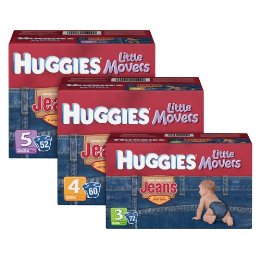
......................................................................................................................................................................
So we've seen all jorts (jeans + shorts) and jeggings (jeans + leggings) but a jiaper?!? Jeepers! Must we subject our little ones to American's obsession with denim by putting them in a diaper disguised as a jean brief? According to Huggies (and 4 enthusiastic mothers' reviews on target.com) we should. Would you dress your child in Huggie's Little Movers Jeans? Have you contributed to the product's out of stock status on target.com? Would you?
Contributed by Allison Jobes
An app by any other name is the same
According to The American Marketing Association (AMA), a brand is defined as a "name, term, sign, symbol or design, or a combination of them intended to identify the goods and services of one seller or group of sellers and to differentiate them from those of other sellers." Key word here = differentiation.
My job entails creating new identities for companies ... products, services, new corporations. In doing so I strive to create a moniker that stands out from the competition; a name that effectively positions the offering in a way that offers distinction and memorability.
So why is it that iPhone apps don't appear to operate under the same guidelines? I was searching for a calorie counter app the other day - type in anything related to calories, exercise or fitness and you are inundated with apps that promise to trim your waistline and increase your cardio stamina. Problem is, aside from the price and the star-based feedback, how do you tell them apart? At first glance alone, how do you differentiate?
Here are the results of my app search for 'calorie': Read more
Bar Call
Belve? Stones? The Shack?
Here’s an interesting article on the benefits and pitfalls of developing and marketing your own brand's bar call.
What's in a Nickname? In Spirits World, an Implied Relationship
What do you think? Should brands develop their own nicknames or leave it to consumers? And, what are some memorable brand nicknames that you like or dislike?
Where Will Olympic Athletes Pop Up Next?
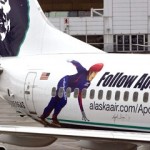
......................................................................................................................................................................
Over the past three decades, how many Olympic athletes can you name? Did your memory conjure up images of the medal ceremony or the face on the Wheaties box? "Being an Olympic athlete can be a very depressing experience: You spend four years grinding away for that one Olympic opportunity where you become really huge, if you're lucky, for 3 or 4 weeks, and then you go back into oblivion," said Boyce Watkins, a faculty affiliate at the College Sport Research Institute at the University of North Carolina at Chapel Hill. Well, this ill-fated reality for some is far from the truth for those Olympic athletes who find themselves signing an endorsement deal. Read more
What's that Smell? Sensory Marketing
Taste and smell are universal languages. We do not need a point of reference, a back-story, or an elaborate marketing campaign to know when something smells or tastes good.
This realization has paved the way for companies to begin using more than simple sights and sounds to reach to target audiences. Sensory marketing is based on the concept that a fully pleasurable experience will reinforce positive associations with a brand.
Check out two companies who are leading the way in the sensory market:
ScentAir
ScentAir helps companies across the globe create customized scents for their products and stores. According to their website, "scent marketing is how businesses are breaking through mundane and overused marketing gimmicks to reach customers emotionally."
Scent Air has created signature scents for retail stores ranging from Sony to Lexus to Bloomingdales, as well as for hotels, realtors, and spas.
FirstFlavor
Imagine how effective a magazine ad for Hershey's would be if you could actually taste the chocolate. FirstFlavor has recognized this power and enables companies to incorporate taste tests in their print ads and direct mail.
Branding and marketing a tool called Peel 'n Taste®, the FirstFlavor website assures that "the flavor of your product is replicated in quick dissolving edible film strips which are distributed through individually packaged pouches to prospective customers."
Would you try one?
Contributed by: Maghan Cook
Old Medium, New Mix
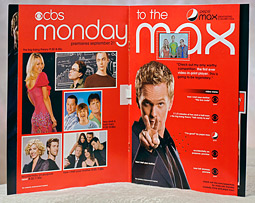
......................................................................................................................................................................
If you’re a magazine reader, get ready to see something different. On September 18th, CBS and Pepsi will launch their newest marketing experiment: video advertisements in a print magazine.
That’s right. Selected Entertainment Weekly subscribers in NYC and LA will receive magazine copies embedded with wafer-thin screens running clips of CBS’s upcoming shows. Additionally, there will be a screen with an ad for Pepsi’s new drink, Pepsi Max.
According to experts, a roughly two-inch screen starts playing automatically as the page flips open. A speaker is embedded below it. Additionally, viewers have the option to start or stop the video by pressing on the screen (an essential feature considering the runtime can be up to 40 hours). The new technology was developed by LA based company, Americhip, and is considered similar to that used by Amazon’s Kindle.
The CBS Corp., PepsiCo, and Entertainment Weekly are touting the video ads as the first ever to appear in a print magazine. CBS would not disclose pricing information for the inserts or the screens, however, experts estimate the cost to be somewhere between $8-15 per copy.
While CBS and Pepsi certainly have the first mover’s advantage on this one, I’m still not convinced that the over a million dollar investment will be worth it. What do you guys think?
By Kelley Blakewood
The Power of a Brand Name

Image from www.taglines.org
......................................................................................................................................................................
What makes a great tagline? Is it longevity; has it endured the test of time? What about influence; has it exercised influence on our culture, media, and language? Or maybe is it originality; has it set new trends or broken through barriers in the advertising industry?
Most likely, it’s a combination of all the above. However, the ten great taglines below follow a different criterion: they each include the company’s name somewhere within the tagline. Take a look at the list below; I’m sure you’ll recognize the power of the brand name.
| You’re in good hands with Allstate. (1956) | Allstate Insurance |
| There are some things that money can’t buy. For everything else there’s MasterCard. (1997) | MasterCard |
| Please don’t squeeze the Charmin. (1964) | Charmin |
| Come alive! You’re in the Pepsi generation. (1964) | Pepsi |
| Have a coke and smile. (1979) | Coca-Cola |
| With a name like Smucker’s, it has to be good. (1962) | Smucker’s |
| Nothing comes between me and my Calvins. (1979) | Calvin Klein Jeans |
| Yo quiero Taco Bell. (mid-1990s) | Taco Bell |
| The few, the proud, the Marines. (1991) | U.S. Marines |
| Don’t get mad. Get GLAD. (early 1980s) | Glad |
By Kelley Blakewood
Package Makeover
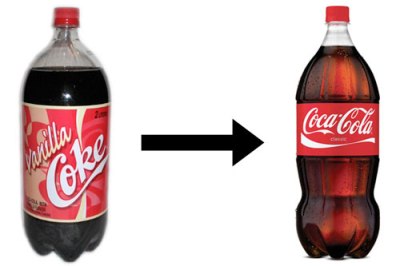
......................................................................................................................................................................
Next time you’re walking down the drink aisle at the grocery store take a look at the amazing selection of shapes and sizes that the carbonated soft drink industry offers its consumers. What’s that? You can hardly tell the difference from brand's bottle to the next? Oh . . . that’s because there’s really not any. Please see exhibit A.
Enter Coca-Cola. The widely-popular beverage company is innovating its packaging with the introduction of a new 2-liter bottle. Coca-Cola decided that it should not be in the same 2-liter bottle as every other brand, which seems like common sense, right? Well, it turns out that the company has actually been offering a wide range of package shapes and sizes overseas, but the North American market is dominated by three packages that we are all familiar with: a 2-liter straight-walled bottle,12-pack of 12-ounce aluminum cans, and a 20-ounce plastic bottle.
Really Reality?
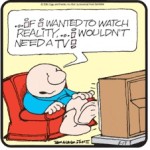
......................................................................................................................................................................
Just flipping on your TV will open your eyes to the plethora of Reality TV Series on our stations these days... but just how real are these shows? According to a recent study, the average sized woman in the United States is approximately 160 pounds and wears size 14 clothing. Last time I checked, you don’t see these average women on TV. Nope, these “reality” TV series are cluttered with women who are all about a size 2…on a “fat” day. In an effort to put the ‘reality’ back into reality TV some television stations have taken a new approach to these reality series. Shows are now receiving names such as Dance Your Ass Off, More to Love, and The Biggest Loser. These television series aim to show the lives of real people, not size 0 or size 2 celebrities.
Read more
